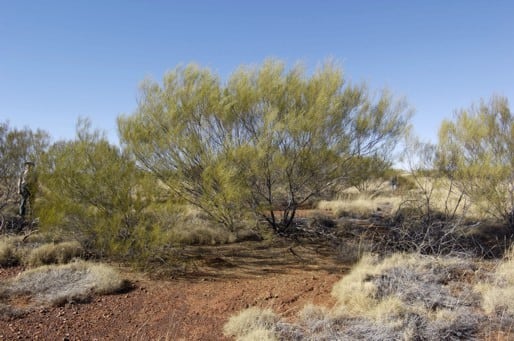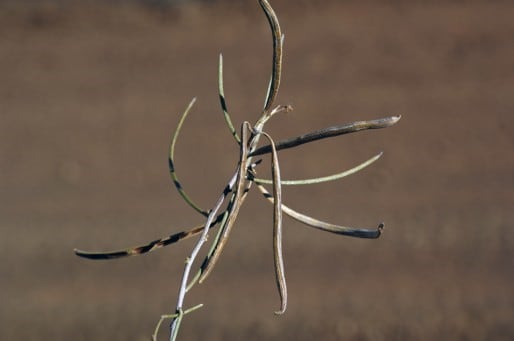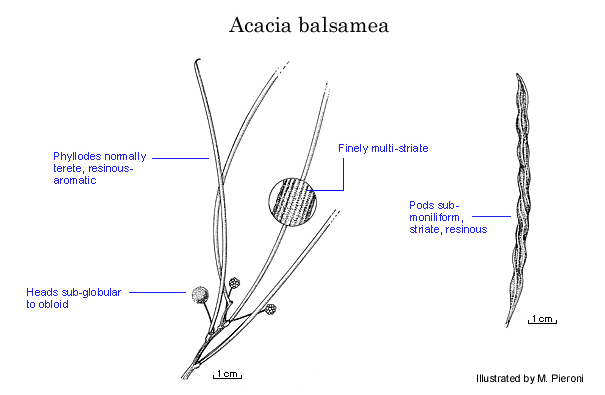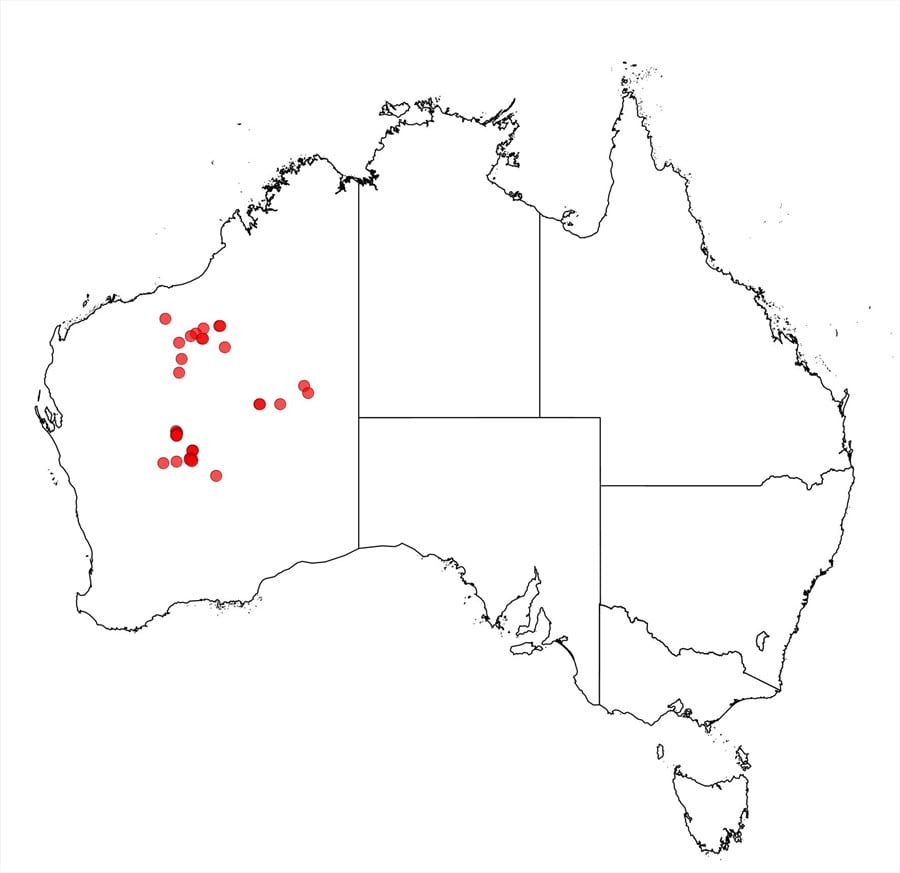Acacia balsamea R.S.Cowan & Maslin
WATTLE
Acacias of Australia
Common Name
Balsam Wattle
Family
Fabaceae
Distribution
Discontinuous, extending from eastern extremity of the Pilbara region E to the Rudall R. Natl Park, S to Leinster and E to the Clutterbuck Hills in the Gibson Desert, W.A.
Description
Multi-stemmed, rounded or obconic shrub 1–4 m high, rarely a single-stemmed tree 4 m high. Branchlets yellow, resin-ribbed at extremities, sericeous between the ribs, glabrescent. Phyllodes erect, terete to flat and linear, straight to shallowly curved or sometimes shallowly sinuous, 8–13 cm long, 0.8–1.4 mm diam. (terete), to 3 mm wide when flat, curved to subuncinate and hard but not pungent at apex, not rigid, drying ±khaki green, fresh phyllodes emit either an aromatic (smelling of Friars Balsam) or unpleasant odour when crushed, with c. 16 ±close, slightly raised resinous nerves, sparsely appressed-hairy between nerves (superficially appearing glabrous). Inflorescences simple, 1 or 2 per axil; peduncles 4–10 mm long, glabrous or sericeous; heads subglobular to obloid, 20–30-flowered. Flowers 5-merous; sepals free. Pods (submature) pendulous, submoniliform, terete to sub-terete, straight to shallowly curved, (5–) 8.5–13 cm long, 2–4 mm diam., coriaceous to sub-woody, strongly longitudinally nerved, glabrous or silvery appressed-hairy between the nerves, resinous. Seeds (submature) longitudinal, elliptic-linear, 5 mm long, dull, brown; aril terminal.
Habitat
Grows on rocky (usually granite) hills in tall open shrubland, often with members of the ‘Acacia aneura group’ (Mulga).
Specimens
W.A.: Paterson Ra. area, 1979, E.M.Goble-Garratt s.n. (MEL, PERTH); Gibson Desert, NE end of Clutterbuck Hills, S.D.Hopper 2833 (PERTH); Gibson Desert, 40 km SSE of eastern end of Clutterbuck Hills, S.D.Hopper 2898 (PERTH).
Notes
A flat phyllode variant occurs in the Gibson and Little Sandy deserts (e.g. S.D.Hopper 2833 & R.P.Hort 993) and a variant with less resinous branchlets and phyllodes than normal occurs at Lake Giles, c. 400 km SE of Mullewa (e.g. A.Markey & S.Dillon 5212).
There is unexplained variation with respect to the smell of crushed phyllodes. A poorly collected species most closely related to A. cockertoniana. It has the general appearance of some members of the Mulga group of species from which it is most readily distinguished by its subglobular to obloid heads and strongly nerved, narrow, ±moniliform pods.
FOA Reference
Data derived from Flora of Australia Volumes 11A (2001), 11B (2001) and 12 (1998), products of ABRS, ©Commonwealth of Australia
Author
Edited by B.R.Maslin
R.S.Cowan, B.R.Maslin
This identification key and fact sheets are available as a mobile application:
URL: https://apps.lucidcentral.org/wattle/
© Copyright 2018. All rights reserved.













